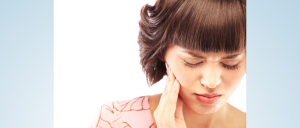Jaw and face pain is quite common, but are easy to treat.
Frequent tension or sinus headaches; difficulty with chewing; painful jaw clicking and popping; tender jaw muscles; dull, aching pain in front of the ear; increased pain in the morning; ringing in the ears or loss of balance. These can be a sign of TMJ dysfunction.
Many people are now suffering from TMJ dysfunction and are seeking osteopathic treatments that offer hands on, drug-free approach of releasing muscle tension to eliminate the pain and improve the quality of life.
Temporomandibular joint dysfunction
This is a broad term referring to problems with the jaws and their functioning. It is commonly referred to as “TMJ”. This system is very complex and problems are caused by a variety of factors. However while many of my patients have suffered from a variety of symptoms, that can easily be related to the imbalances of the muscles, connective tissues and bones forming the jaw.
The temporomandibular system consists of two major components: the temporomandibular joint or TMJ, and the neuromuscularsystem.
TMJ
This is the term that specifically refers to the joints that connect your lower jaw, or mandible to the temporal bone of your skull. The temporal bone also houses the ear and many other important structures responsible for the sense of balance. These two joints are found just in front of the ears. Their close proximity to the ear is why some patients experience ear symptoms and can often hear the joints pop or crack.
Neuromascular
This system is the nerves and muscles which work the temporomandibular system. The muscles that directly move the jaw are spanning from the top of your head to the middle of your neck, but it is important to realize that the muscles that move your jaws are interconnected with structures that are inside your skull, neck, shoulders and the back. That is why TMJ problems are often related to poor postural habits such as slouching at the desk or propping your head on one side with your hand while reading a book.
Temporomandibular disorders rarely have a single cause. Everybody presents with an individual combination of factors that are determined during history taking and clinical exam.
Acute trauma
Trauma to the jaws such as a car accident, a fall, a punch, etc. can cause damage to the muscles or joint. Sometimes trauma to the joint can cause chronic damage which may eventually contribute to a TMJ problem at a later time.
Bruxism
Bruxism refers to grinding and clenching of the teeth. Some do this while awake but more often it is done while sleeping. This bruxing is done by the jaw muscles and by the morning they can be painful due to fatigue. This constant pressure also can damage the TMJs over time.
Emotional stress
Stress often plays an integral role in the development of TMJ. Stress increases both the severity and duration of bruxism while asleep. Also, many will subconsciously clench or grind their teeth more while awake during times of stress. The other way stress contributes to TMJ is that during times of stress your pain sensitivity and susceptibility to inflammation will increase. As a result you are more likely to experience symptoms of TMJ or other pains that already exist. That is why the relaxation and stress management is a major component in the treatment of TMJ.
Read THIS ARTICLE for in depth analysis of how emotional stress can cause TMJ dysfunction.
Ergonomic
Your job and how you do it can contribute to TMJ and related problems. If you work at a computer all day, for example, you may be holding your head in such a way that places strain on your jaw. TMJ is the highest joint in the chain that starts at your feet and goes on through the hips, pelvis and up the spine. Any imbalances accumulated along the way may manifest themselves as the TMJ dysfunction. Hence any treatment of TMJ has to include postural check and correction of muscular or connective tissue tensions anywhere in the body.
I offer osteopathic treatments for TMJ dysfunction. Because of the factors mentioned above we will start with full postural check up and thorough health history taking. All imbalances at the feet, hips, back, neck and shoulders are addressed during the treatments. I use a variety of subtle, non invasive and yet effective techniques so we keep the focus on relaxation. The treatment will include 4 to 6 one hour sessions, however most patients experience significant relief after the first session.
